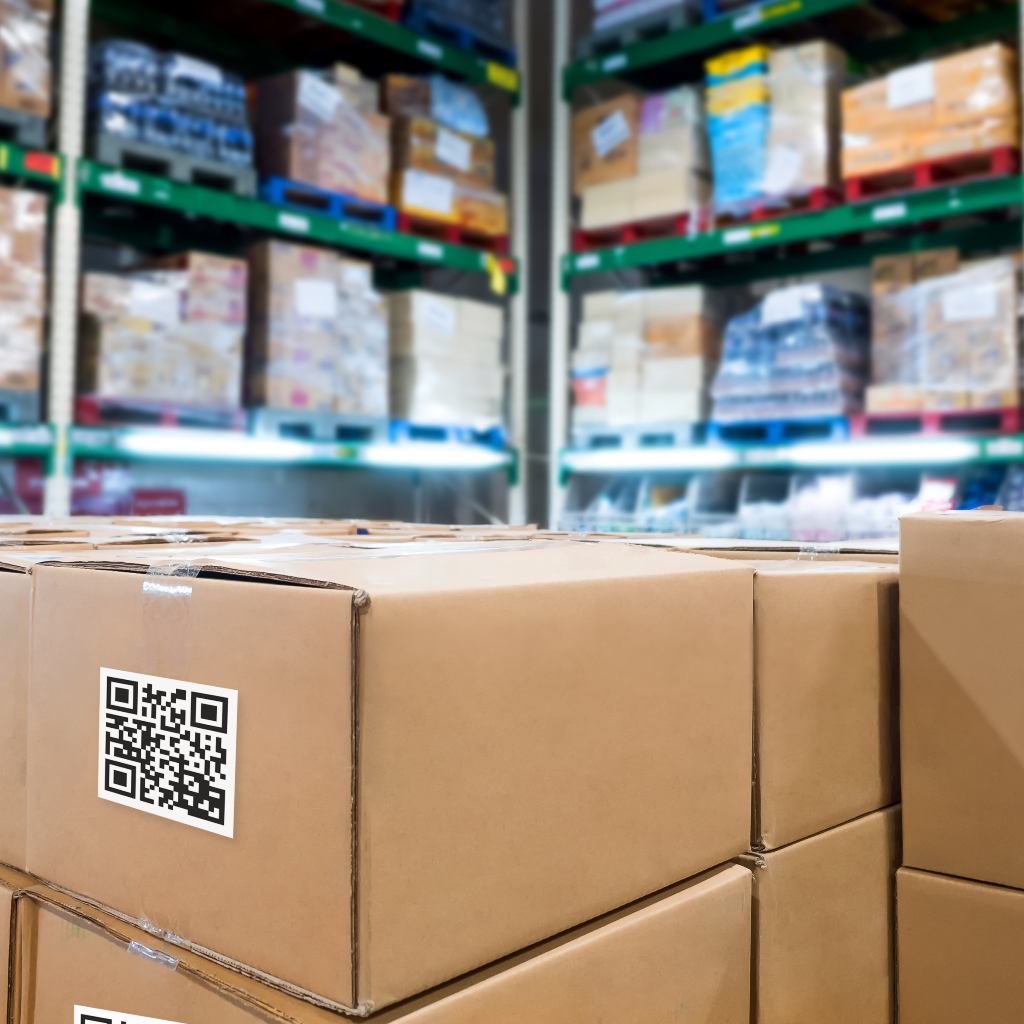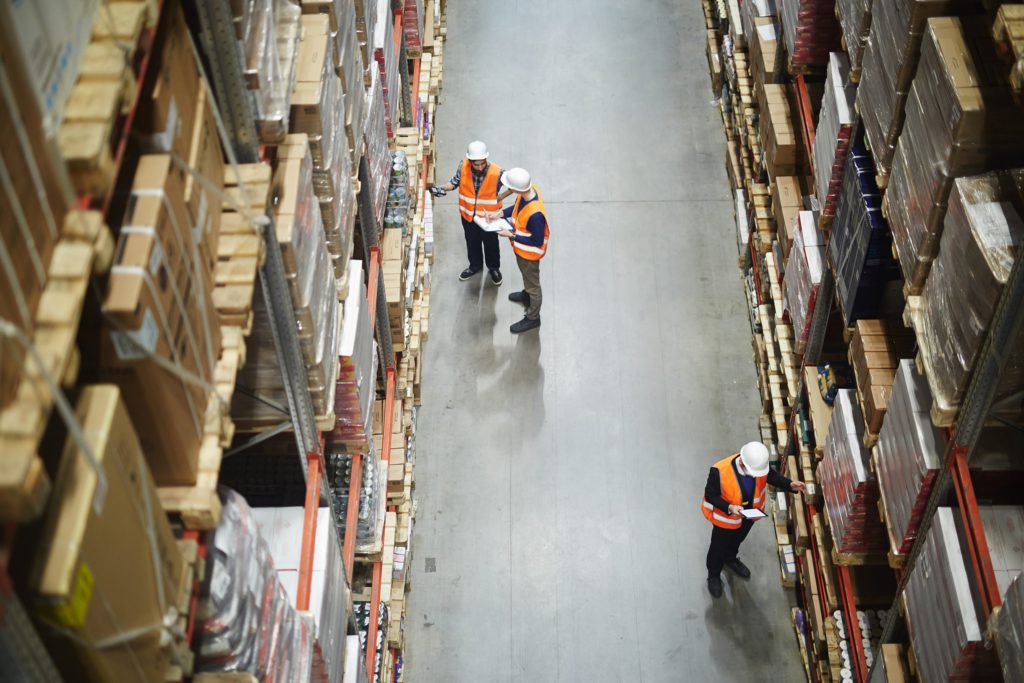Businesses today are experiencing a significant shift in the way they produce and distribute goods. This new wave is called Industry 4.0 and is characterized by automation and data exchange. These, in turn, are made possible by connecting physical objects and digital assets, implying the need for product digitalization.
Five Steps To Effective Product Digitalization
Different companies may vary in the way they implement digitalization, but there are basic steps to digitizing products.

The blurring of boundaries between the offline and online worlds is part of the product digitalization process — and it’s changing business models as we know them. No enterprise that produces goods can escape the disruption that Industry 4.0 brings. Different industries need to embrace product digitalization, from farming to fashion, to make the most out of technologies like the Internet of Things and big data analysis.
It may be challenging to imagine digitizing a product, though, mainly using traditional or natural production methods. How do you put a digital stamp on organically grown tomatoes? How can you turn a wheel of cheese into a digital asset?
This line of thinking comes with a misconception about digitalization. Digitalization is not just about adding digital information to a physical good. It’s about transforming your business model, operations, and supply chain. Gartner defines digitalization as “the use of digital technologies to change a business model and provide new revenue and value-producing opportunities; it is the process of moving to a digital business.”
Below, we’ll talk about the steps you need to take to digitize your products:
Why you need to digitize your products
According to PwC, a highly digitalized supply chain and operation can bring companies efficiency gains of 4.1 percent annually and boost revenue by 2.9 percent per year.
A digital supply chain gives you a competitive advantage in many ways. One is that it allows you to track and trace your products as they move from producer to buyer to distributor until it reaches the end consumer.
Armed with such data, enterprises can identify trends and anomalies, improve supply forecasts, and spot inefficiencies and bottlenecks in the manufacturing and distribution processes.
You will know exactly where products are in the supply chain, whether they’re making a journey across an ocean or being held up at customs. You can understand where products are purchased or quickly identify batches of defective goods. You can identify warehouse operators that fail to store goods at the correct temperatures or shipping partners that send items to the wrong destination.
Another reason to digitize your products is simply that digitalization is inevitable. That means that it’s an expensive risk to wait and see what everyone else is doing as an enterprise. The most strategic step is to adopt digitalization now. As Ernst & Young points out, “it has been established that disruptive technology deployment has been one of the most effective ways of gaining competitive advantage, increasing efficiency, and driving business growth.”
How to digitize your product

As we’ve discussed, digitalization is not just about connecting a physical good to a digital asset, but that is part of the picture.
Different companies may vary in how they implement digitalization, such as the physical tools they use and the choice to integrate blockchain into the process. But there are essential steps to digitizing products.
1. Identifying your goals for product digitalization
When identifying goals for digitalization, look beyond supply chain managers. Consider your entire operation and discuss digitalization with different departments. What types of data insights do marketing, category, and brand managers need? How can digitalization help with gathering these data or deploying strategies relevant to these insights?
For example, category managers might be dealing with a surge of counterfeits that ruin their brand reputation. Digitalization can help sellers and consumers identify authentic products by scanning a non-reproducible QR code.
A multinational convenience store chain might not know who is buying their prepared meals. They can integrate digitalization into their existing app. Users of the store’s app can scan the packaging of the ready meals to pay online or score points. Because the users are registered on the app, this simple scanning gives marketing managers insights into the types of consumers who are buying their prepared meals in different countries.
2. Physical aspect
The first step is determining the most suitable way to place a digital asset on your physical product. The most obvious answer might be the product packaging, as it offers printable space visible to people working along the supply chain and end consumers.
If it isn’t practical or feasible to print directly on the package, the next solution would be to use printed labels or product tags.
3. Embedding
The next step is to add a tamper-proof physical unique identifier on the physical aspect. This usually comes in a barcode, a QR code, a complex sequence of numbers, or a sensor tag — or a combination of two or more of these.
The critical step here is to make sure that the digital ID is not easily replicable so that you can avoid counterfeits and fraud.
One way to do this is through 3D-printed, readable sensor tags. You can also use secured QR codes that lose detail when copied, which means reproductions won’t work.
4. Enabling
To do this, you need to register and activate the tamper-proof physical unique identifier digitally. The digital ID should then be connected with the appropriate digital asset by entering it into a database or blockchain. This transforms the physical good into digital data. A shampoo bottle is no longer just a bottle of shampoo; it is a digital record in your system.
Cloud registration creates a record of the identifier and associates it with all the data that belongs to it. On the other hand, registration in a blockchain creates an immutable digital twin. The identifier effectively “lives” in a blockchain and can no longer be modified.
5. Making use of the data
A company may have massive amounts of data but still fail to improve its operations, customer service, and bottom line. That’s why the digitalization process is incomplete without data analysis.
To thrive and compete in the era of Industry 4.0, businesses need to track, monitor, and analyze product-related data to optimize supply chain management and improve the customer experience. That means a digitalized supply chain must also come with business intelligence capabilities.
The types of metrics that your business intelligence tool reports would depend on each depar
The types of metrics that your business intelligence tool reports would depend on each department and its goals.
For example, you can track:
- Length of time between order placement and delivery
- Number of goods delivered in a day
- Damage rate (and where, within the supply chain, the damage occurred)
- Product freshness (for perishable goods)
- Product return rate in each location
- Number and location of users that scan the product code
- Actions taken by users on a customized app after scanning the product code
Product Digitalization: Key considerations
If the steps to digitalization seem straightforward, how you implement them is another story. There are plenty of aspects to consider when transforming your supply chain process.
Some are relatively simple questions to answer, while others can make or break your digitalization efforts.
What will you digitize?
Can you digitize every single item, or do you need to focus on batches?
For example, it’s impractical to digitize every single coffee bean or every piece of grape. Consider grouping them instead into harvest date, source, and other classifications that make sense for the product.
Or, if you’re dealing with beverages, you can classify them by brew batch or bottling date. Non-perishable goods can be classified according to which factory produced them and when they were manufactured.
How will you keep the data secure?
Data on your products and their movement throughout the supply chain is helpful for your enterprise and end consumers. However, obtaining transparency in your supply chain requires collaboration and data sharing with parties you don’t necessarily trust. For this reason, your digitalization process has to come with tight security measures that allow you to share data with other players along the entire supply chain.
One way to achieve this is through the use of blockchain. Blockchain technology can help you establish a secure and shared single source of truth on a product history with all the parties involved in your supply chain, with no party being in complete control of that information. Different parties can have additional permissions concerning what input and information they can add while still guaranteeing that the data cannot be manipulated afterward.
This ensures that the product history an enterprise or consumer accesses can be trusted not to have been altered since its moment of entry. This enables you to increase transparency, trust, and security in the management of your data.
How will you educate consumers on product digitalization?
It’s important to develop a plan for educating your consumers about digitization. They’ll need to know what to look for and how to interact with the product and what benefits they will gain from doing so.
First, you’ll need to determine whether this requires your customers to adopt new technologies and behaviors. For example, your digitalization marketing campaign might rely on customers using a customized app to scan a QR code on your product package. This will determine the extent of the educational marketing campaign that you’ll need to undertake.
For example, if you’re using QR codes, you’ll need to consider if people in your target geography have the habit of scanning products and if they even know what QR codes are in the first place. If you rely on a sensor tag that communicates with a smartphone’s Near Field Communication (NFC) capability, you’ll need to show consumers how to use that feature.
Next, you’ll have to assess whether they can use a generic QR code scanner or if they need to use your app. The former works if you want the customer to find out information, such as the vintage, origin, and backstory of a bottle of wine or the ethical sourcing of cacao beans.
However, that won’t give you any idea on who’s scanning the codes, perhaps apart from where they are located. Having them sign up for a customized app and use that app to scan the code will allow you to find out more about these consumers, as you will own the data inputted into the app.
The question now is if your consumers are willing to change their habits enough to suit your process. Consider how you can catch their attention by making the QR code look like an attractive pattern and displaying it prominently on the product package.
You can even tie in the act of scanning with fun experiences. AMC Theatres, for example, developed an augmented reality feature in their app to encourage moviegoers to scan posters. Once users scan a scannable movie poster, the app would direct them to that film’s trailer and a page to purchase tickets.
It also helps offer an incentive, such as a rewards program or the chance to win a free item to scan the code or use your app.
At other times, the incentive may be a practical one. Johnnie Walker, for example, rolled out printed sensor tags for their Blue Label whisky bottles.

Using their smartphones’ NFC capability to read the tags, consumers could find out when the bottle was sealed and opened. This is an incentive because it gives them information that could improve their enjoyment of the drink.
Do you have the skills to roll out a digital transformation?
In a global survey of more than 2,000 respondents from nine major industrial sectors, PwC found that people, not technology, are the biggest challenge to digital transformation.
This echoes the findings of Deloitte, which surveyed respondents from logistics and distribution companies. For 63 percent of the respondents, the difficulty of hiring and retaining people with the right skills was deemed as the biggest barrier to transformation.
Business leaders and the people tasked with implementing new technologies and systems need the right digital qualifications. IT staff will need to understand business operations and goals, and operations teams need to have a working knowledge of programs such as data management and business intelligence software. Companies will need experts in big data, the Internet of Things, machine learning, robotics, and automation.
Leaders also need to convince employees to welcome and adopt a change in processes. For example, employees will need to learn to work with automated machines equipped with sensors to gather data. They’ll need to adopt new habits, such as regularly checking reports on metrics and KPIs, identifying data patterns and outliers, and following data security protocols.
How will you implement the system across the supply chain?

One major challenge in digitalization is achieving buy-in from the relevant stakeholders. And once you have their cooperation, you’ll need to deploy your system and enforce your standards across the supply chain. This can involve plenty of subsidiaries and third parties in different countries across two or more continents.
As a result, the digitalization process takes a long time to implement. Even the relatively simple task of printing QR codes on product packages or printing and sticking QR code labels can take three to four months to process. You’ll need to coordinate with the packaging supplier, printer, and QR code maker, not to mention supply chain and inventory managers, and data engineers.
Once you complete the planning and deployment phases, you will have in place a system that you can use for many years to come. Digitalization, after all, is a long-term play.
Do you have a plan for maintenance and measurement?
To make the most out of this system, implement clear maintenance protocols and regularly update the system in line with technological developments in your industry. Get feedback from different departments—manufacturing, packaging, distribution, marketing, and other relevant teams—to discover gaps between the system’s intended usage and its practical application.
The effectiveness of the system is not limited to its practicality, of course. Go back to your goals for digitalization (see step 1) and see whether you are achieving them. These goals will also guide you in measuring the return on investment of digitalization.
For example, if your goal is to protect your brand from counterfeits, has digitalization helped you achieve this? Have sales of counterfeits dropped, complaints from duped customers lessened, and your brand reputation strengthened? Do customers actually scan the tag or code on your product to verify its authenticity? Keep in mind that specific goals are the first step towards understanding your investment returns.
After adding IoT sensors to its compressed air systems, manufacturer Kaeser Kompressoren captured environmental and performance data and used predictive analytics to avoid unexpected outages. This helped reduce unplanned equipment downtimes by 60 percent and contributed to annual savings of around $10 million in break-fix costs.
The future is digitalization
Digitalization expands the capabilities and lives of physical products by giving them a digital identity. Long after a pack of juice is consumed, its data lives on to contribute insights to companies. Weeks after being harvested and shipped out across dozens of cities, heads of lettuce can help you trace E.coli outbreaks and prevent the spread of infection.
Implementation is complex, but enterprises need to see digitalization as a global strategy. Return on investment must be measured in the medium and long terms. After all, businesses that keep up with technological innovations know that digitalization is inevitable. It’s now a matter of adopting it strategically and successfully.